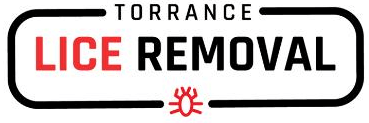How To Choose A Lice Comb
How to Choose a Lice Comb
In This Article:
Do Electric Lice Combs Work?
Which Kind of Head Lice Comb is best?
When to use a lice comb
What are you looking for?
When should you see a Doctor for head lice?
Life can get pretty hectic when your child has lice, so the last thing you need is a lice comb that doesn’t work.
Electric, plastic, and metal head lice combs exist. Electric combs for lice come in a number of different designs but at present none of them are well-studied. Doctors don’t currently recommend them over non-electric kinds.
Regardless of which type you choose, be prepared to use it to comb through all of your child’s hair for weeks in a row in order to remove as many of the pests as possible.
Do Electric Lice Combs Work?
Electric lice combs have been on the market since the early 2000s — but there still isn’t a version out today that can compete with fine-toothed metal and plastic lice combs.
In fact, the Children’s Hospital of Wisconsin doesn’t recommend “wasting your money” on an electronic lice comb. There isn’t a single peer-reviewed study that can verify any of the claims that the sellers make about their effectiveness.
For example, there’s one kind of electronic lice comb that’s designed to make a humming sound as it moves through your hair. It produces a small electrical zap whenever it detects a louse between its teeth. This effectively kills the insect. Then you need to clean the comb off before it’ll resume its humming search.
Experts dislike this comb for a number of reasons. Due to safety concerns, it can only be used on dry hair. Lice can — and will — run away faster in dry hair while wet hair slows them down.
Also, the comb stops working whenever anything becomes caught between its teeth. So you’re constantly stopping to clean random scalp debris off of the brush.
ADVERTISEMENT
With a design like this, experts don’t need many studies to know that traditional combs are simply more efficient at controlling head lice.
Which Kind of Lice Comb is Best?
To decide on the best comb for you, ask yourself if you’re willing to spend a little extra money to buy one. Some combs, usually made of plastic. come for free with lice kits and medications while others are sold separately.
Also decide if you want the comb mostly for adult lice, their eggs (called nits), or both.
All combs have a common design feature of small teeth with very little space between them. In general, the more fine-toothed the comb, the more effective it is. A tooth spacing of around 0.2 to 0.3 inches can remove adult lice but tends to miss nits. Combs with teeth closer to 0.09 inches are best for removing both adults and nits.
One study compared two plastic lice combs to two metal lice combs and found that. while all worked to remove lice, the metal comb with finest teeth was the best at removing all of the developmental stages.
When to Use a Lice Comb
Lice combs are one of the most effective strategies for eliminating your child’s head lice.
They can be especially helpful if your child’s school has a no-nit policy, where students aren’t allowed back if any nits are present. Lice eggs are small, hard to see, and sticky. Luckily, combs are an easy way to remove lice eggs.
In the long term, they’re even more reliable as a global solution than any particular medication. This is because lice are more likely to become resistant to a chemical medicine than they are to a physical comb.
Combs can be both the main treatment option or, more commonly, used alongside medication. Either way, you need to start treatment with your comb as soon as you realize that your child has lice. Start the exact same day, if possible.
After beginning treatment, continue combing at least once a day while you still see live lice. Then continue to comb your child’s hair every three to four days for at least three weeks after you see your last live louse. This is because nits can take up to two weeks to hatch.
How to Use a Lice Comb
There are a number of steps to using a lice comb. Be careful to do it the right way so your child can be lice-free as fast as possible.
The steps you should follow are:
- First, wet all of your child’s hair and comb conditioner through it with a regular brush. The water slows down the lice and the conditioner makes the hair easier to comb.
- Then sit your child down where you can easily see and reach their head. Combing underneath a bright light is best.
- Separate their hair into a number of small sections.
- Begin combing through these sections one at a time.
- Clean the comb out with a tissue or toilet paper after every few brushes so you can inspect it for live lice and nits.
- Pay special attention to areas close to the scalp, behind their ears, and near the nape of their neck. The bugs tend to gather in these regions.
What Are You Looking For?
When you comb, you’re more likely to find adult lice than nits.
The adults have dark brown bodies that are easier to see against the scalp. They move around quickly and are about the size of a sesame seed. They can’t jump but will crawl all over the hair and scalp.
The nits can be yellow, brown, or tan and are much smaller than the adults. Nits are usually found within a few inches above the scalp. They look like they’ve been glued to the strand of hair. The eggs become clear when the lice hatch.
While you comb, keep in mind that you’re likely to find things in your child’s hair besides lice, like:
- Dandruff
- Dirt
- Sand
- Lint
Make sure that you don’t mistake any of these things for lice or nits.

